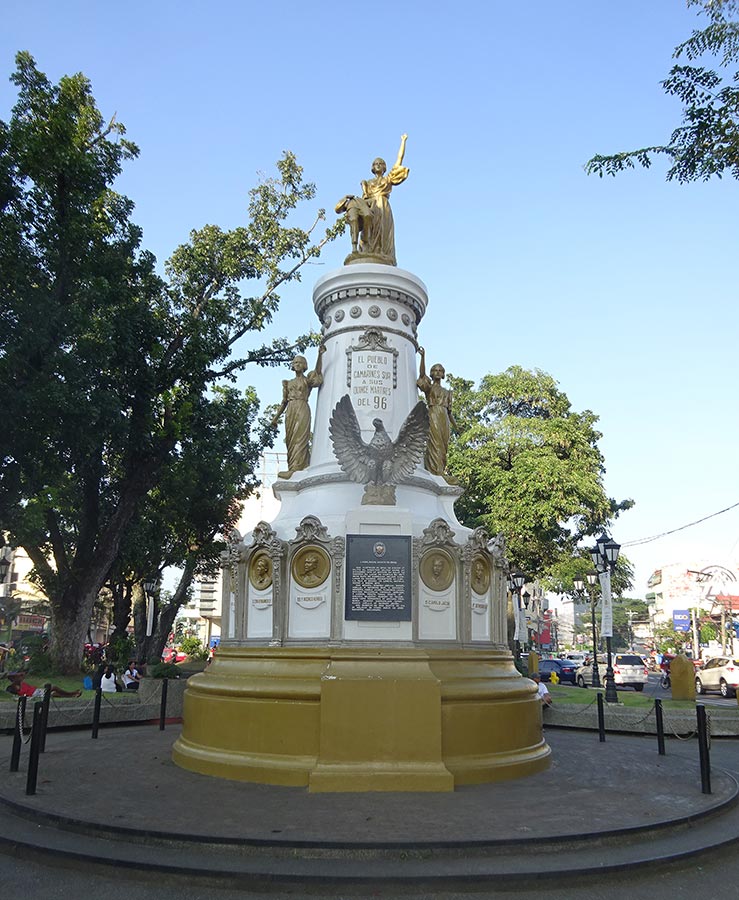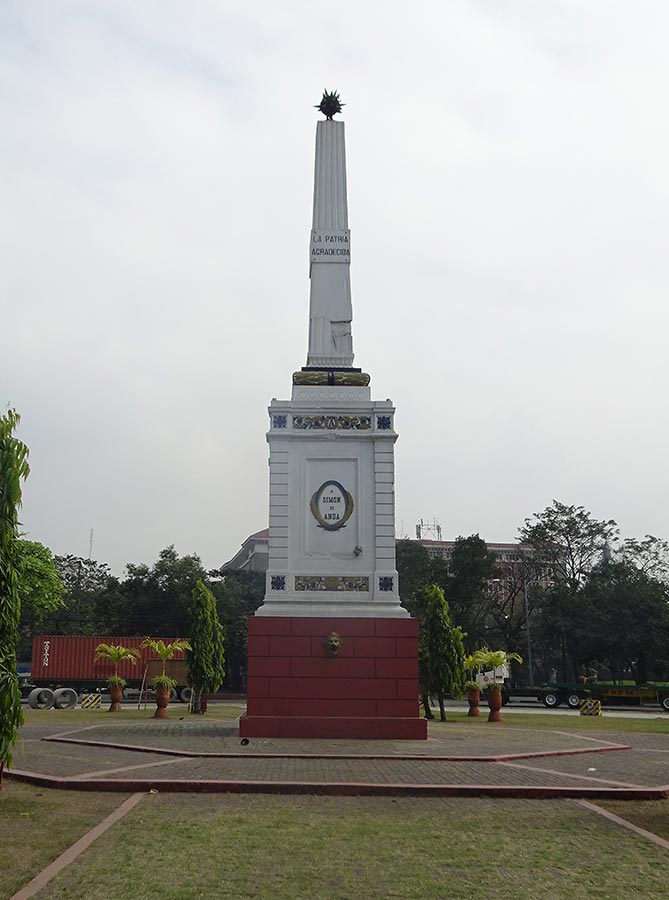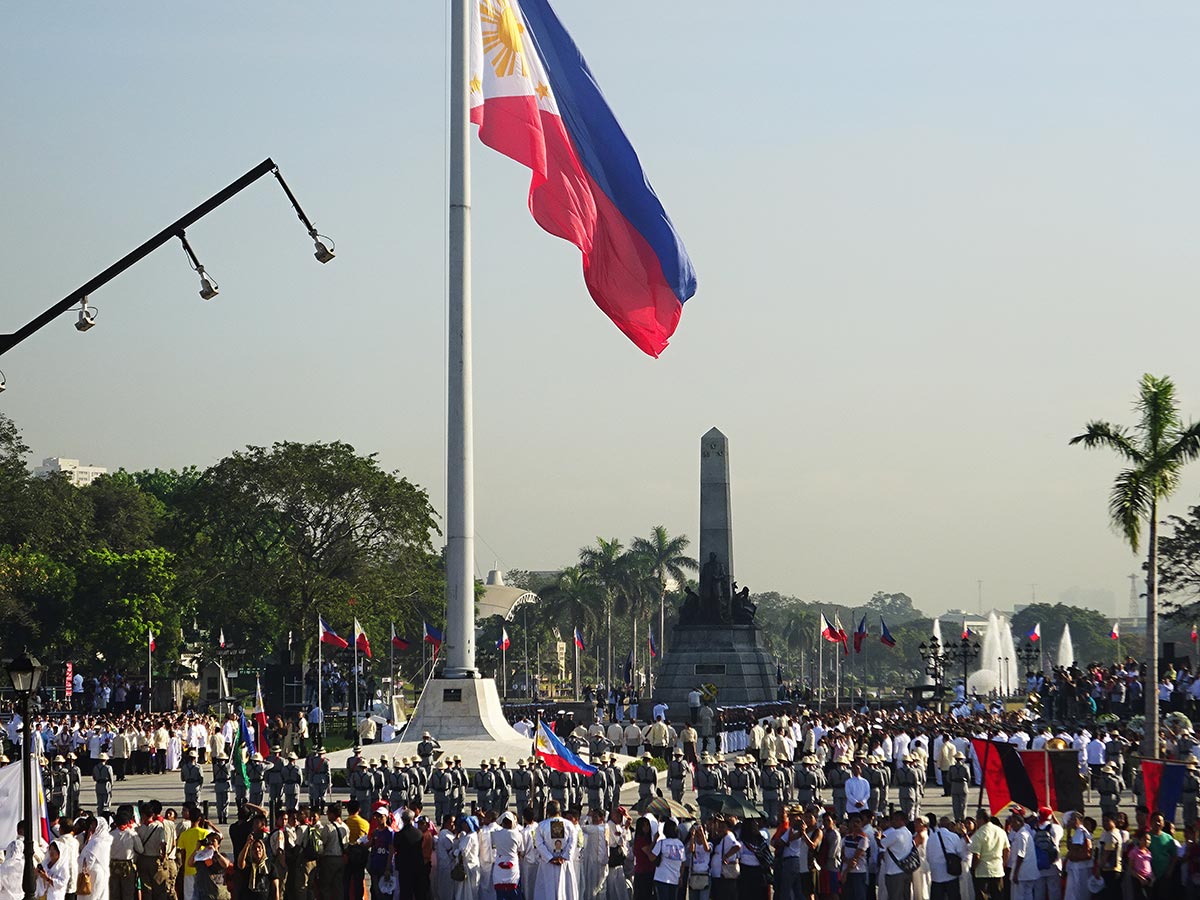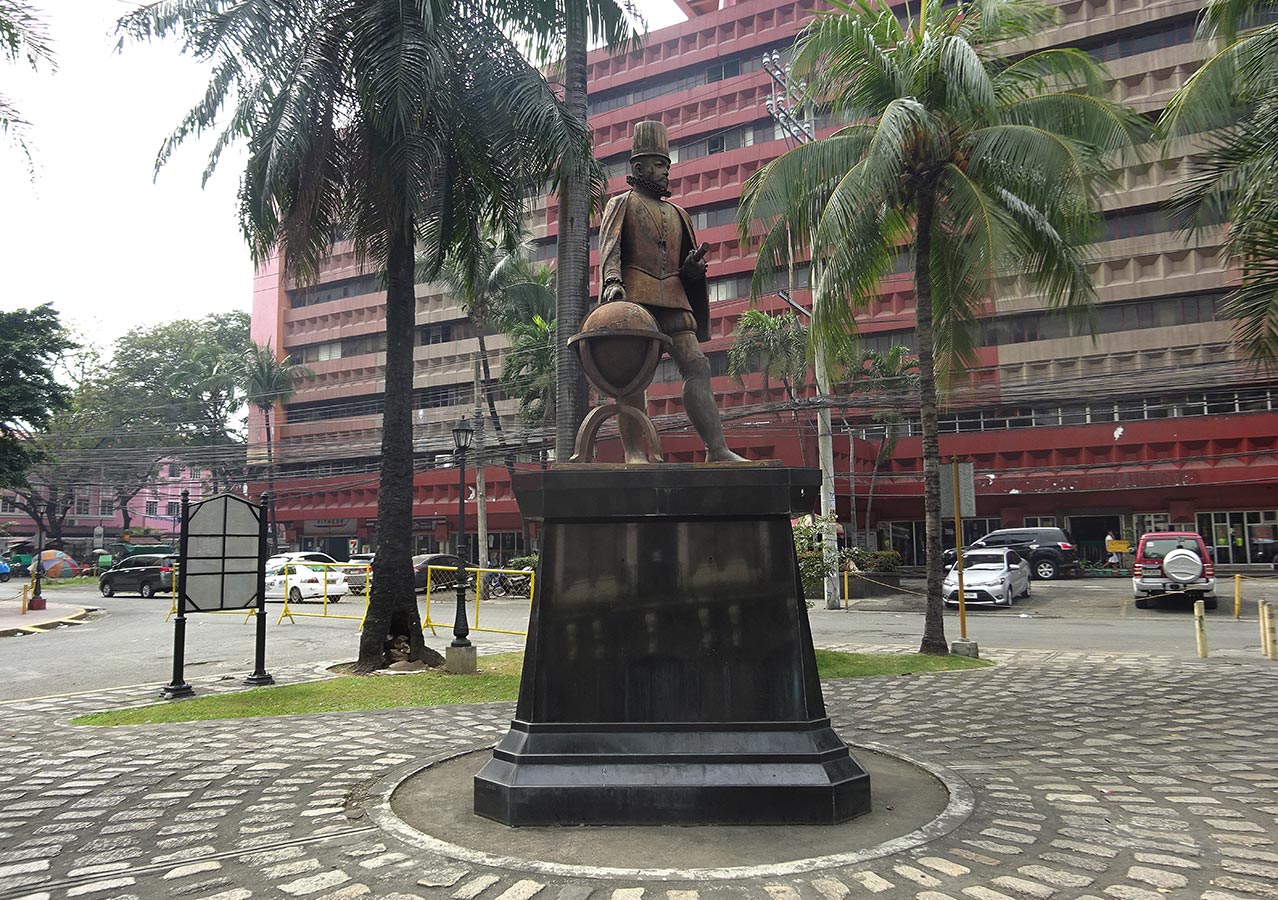Monuments as Markers of History and Identity: The Example of the Philippines
Architecture students learn that the fundamental principles of building design and urban design are structure, form, material, space, function, and scale. In recent years, though, architectural pedagogy has expanded to include inquiry into the aesthetics and meaning of public sculpture and monuments. 1 Vital to this intellectual development has been Heritage Studies: the scholarly field has fostered awareness that aged artistic objects comprise a great proportion of the contemporary built fabric. 2
Thanks to the rise of influential social movements such as Black Lives Matter (BLM), the character of present-day built environments has come under additional scrutiny. Consequently, particularly in the West, statues, monuments, and sculptures associated with the themes of slave trading and imperialism have been pulled down, vandalized, or are the subject of intense public debate re their potential relocation. 3 Given such discussion, questions have been tendered as to how exactly urban environments, culture, national identity, and the process of memorialization intertwine.
Accordingly, in some communities, a ‘retain and explain’ policy towards public sculpture and monuments has been introduced. Thus, no matter what their design form is, and whom they venerate, the preserving of artistic objects in situ is perceived by some to grant opportunity to learn more about past matters which today confront our sense-of-self and our understanding of social justice.
Notwithstanding statues and memorials being damaged and toppled in places such as Europe, the United States, Canada, and New Zealand, passionate protest during the past few years about what monuments represent has, at best, had minimal effect in many parts of Asia. In previously colonized by the West (e.g., India), widespread calls have not yet yielded any successful removals of monuments from public sites.
Nevertheless, the lack of spirited remonstration does not mean that the ghosts of past oppression have disappeared from the collective memory. To cite Anil Dharkar of The India Express, Indians’ grasp of their nation’s history is still bound to the colonial-age statues that stand in public spaces. 4 Similarly, in the Philippines, the public’s awareness of their nation’s past is still shaped by architectural objects erected before national independence in downtown environments [Fig. 2].

Fig. 2: A photo of the monument in Naga dedicated to the Fifteen Martyrs of Bicol. Unveiled in 1923, the monument is sited within the city’s principal downtown plaza and, on January 4 of each year, a civic event is held to commemorate those killed in January 1897, given their participation in the native quest for liberty and self-rule. (Photo by the author, 2022)
Statues, decolonization, and present-day Asia
If one is to assume that the recent toppling of statues and monuments signals global societal commitment to decoloniality, then, given the historical narratives of many Asian nations, such activities should have been observable in large parts of the continent. But, to think along such lines about, for example, the Philippines – a place with a lengthy colonial history (1565-1946) – is in fact flawed. Any belief that Filipinos en masse presently disapprove of commemorating historical figures who undertook actions that advocated colonial rule, is based on unfounded logic. 5
To forge such an ungrounded presumption undermines, on the one hand, what colonial era monuments are perceived to commemorate in the postcolonial setting, and, on the other hand, it ignores how the nation’s history has been framed by public education and the lengthy existence of monuments and statuary in towns and cities as part of this knowledge- and identity-building process [Fig. 1].
In short, the Philippine Islands boasts an enormous number of pre-1946 monuments. These, typically, are found in public spaces established by the Spanish and American colonizers as part of their efforts to redesign local towns and cities and, by doing so, exhibit the advancement of native civilization [Fig. 3].

Fig. 3: The Anda Monument. Originally erected in 1871 but revitalized in 2020, the Anda Monument commemorates Simón de Anda y Salazar (1709-1776). He was a Spanish governor who played a critical role in resisting the British invasion of 1762-4. (Photo by the author, 2023)
In the case of the Spaniards, their imprint upon Philippine towns and cities derives from the application of the 1570s Laws of the Indies. Explained by Axel Mundigo and Dora Crouch to comprise 148 ordinances that dealt with every aspect of urban planning, 6 the Laws helped to accentuate Christian ideology in environmental form via the establishment of church-lined plaza mayors (main plazas) at the center of each urban community. 7
The importance of these public spaces to Philippine life cannot be underestimated: they were the center of local cultural activity, and they were the principal open areas around which the entire settlement’s layout was arranged. 8 To accentuate the Christian character of urban communities, plaza mayors were often marked by religious iconography such as a wooden cross.
Public spaces and statues: The Philippine context
To cite Donn Hart and Robert R. Reed, the distinct spatial form of settlements in the Philippines supplies physical evidence of past colonial authority. 9 In a place such as Manila – where from the late 1500s to late 1800s the Spanish colonizers lived alongside native, Chinese, Japanese, and other foreign populations – religious processions and fiestas held in plazas permitted rare occasions for all people to come together as Manileños, i.e., to unite with a single, shared identity. Similarly, after the commencement of American colonization in 1898, monuments were used as a tool to promote the unity of people as ‘Filipinos.’
Under American colonial, rule hundreds of new statues were built throughout the country. Usually sited in proximity to local government offices, such artistic features helped to demonstrate the new civic nature of society alongside the state-sponsored pride in being ‘Filipino.’ Indeed, monuments erected during the American colonial era were commonly dedicated to Filipino heroes, namely José Rizal (1861-1896), who was assassinated by the Spanish colonial administration for allegedly inciting rebellion. Rather, Rizal was a polymath whose writings exposed the broad Filipino desire at the end of the 1800s for social reform via peaceful means. Thus, the ‘injustice’ of his death in 1896 at the hands of an authoritarian colonial regime was exploited by the Americans to promote moral fortitude as part of the Philippines’ post-Spanish/American-driven modernity and, so, ‘progress.’ Indeed, Rizal Monuments have in the American colonial and in the postcolonial milieus been read by the native population as expressions of their unity and pride, and to also reference their quest for social improvement; the social reform issues raised by Rizal in his writings still have relevance to Filipinos today, given profound socio-economic struggles within the country and the perceived inability of people, at times after national independence, to have ‘voice’ as to how society is managed.
So that different social groups could come together, the Americans passed laws to establish new civic celebrations, including to celebrate the anniversary of Rizal’s death (December 30). 10 Not only were these events held in public spaces laid out in front of presidencias (municipal offices) or provincial capitols, these events also supplied occasions for public officials to make speeches, to collect money so as to fund new community initiatives, and for the public to build parade floats lauding bygone Filipino patriots.
In this milieu Rizal was promoted by the American colonizers to a near-deified status: the colonizers adhered to the viewpoint that every modern nation should have their own George Washington. For the Filipinos, the person selected by the Americans to be their ‘father’ was Rizal [Fig. 4].

Fig. 4: The Rizal Monument in Manila. Constructed in 1913, Rizal’s bones are interred into the base of the memorial. Each year, on December 30, the life of Rizal is commemorated by a ceremony led by the President of the Philippine Republic. (Photo by the author, 2024)
Philippine heritage and promoting tourism today
Lately, heritage awareness has become a fundamental part of both domestic and international tourism promotion in Manila. 11 Central to local tourism growth is the Spanish-era walled city known as Intramuros. 12
Originally built during the late 1500s, Intramuros was the heart of politics, governance, and culture in the country and until 1898. The development of the tourism industry has helped present the district as the place where Filipinos gathered together as a coherent community. In this cultural frame Filipinos, and others who visit the historic site, view monuments in the walled city as an expression of how important the settlement once was. Significantly, too, by doing this, they begin to more deeply comprehend how the contemporary Filipino state of being has come about, and how the past has shaped the present in terms of making ‘the modern Filipino’ [Fig. 5].

Fig. 5: The statue of King Philip II of Spain in the Plaza de España, Intramuros. Erected in 1998, the monument commemorates the Spanish monarch at the time colonization of the Philippines began (in 1565) and, since that date, the notion of Philippine-Spanish friendship. (Photo by the author, 2024)
As a result, the critique of the white, male master narrative presented by social movements such as BLM, whilst persuasive in some parts of the world, has gathered no momentum within Philippine society. Moreover, whilst in some countries, particularly those in the West, calls to remove/relocate monuments are considered necessary in order to diminish racism/social injustice, colonial-era monuments of Spanish monarchs and native heroes in the Philippines are conversely read somewhat differently. They, rather, “are perceived as commemorating individuals who promoted local development.” 13
In 2021, Filipinos celebrated the 500th anniversary of Ferdinand Magellan’s arrival in the Philippine Archipelago. Whilst, in many parts of the world, people have turned their back on matters aligned to foreign invasions and the rise of imperialism, in contrast, in the Philippines 2021 was a year of national celebrations that allowed for a re-evaluation of what it is to be ‘Filipino.’
In other countries, as indicated beforehand, social movements such as BLM have encouraged a rethink of how the past is remembered and memorialized within the built urban environment. In the Philippines, instead, interest in the past has reaffirmed the status of Intramuros as the site to view the evolutionary narrative of ‘being Filipino’ and, equally, to grasp how, through time, events occurring within the walled city have shaped the national chronicle. 14
In this scaffold of thinking, colonial-era monuments therefore expose events and persons, good and bad, who played a role in shaping past-to-present Filipino identity. In other words, in the postcolonial milieu, individuals from the past inform of the ‘development’ that has affected what it means to be ‘Filipino’ today.
Ian Morley is Vice Chair (External) of the Department of History at the Chinese University of Hong Kong.